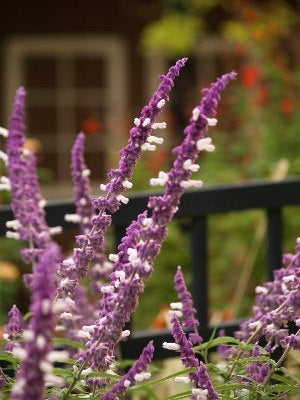Master Gardeners: Gardening Tips: September
Published 12:20 am Saturday, September 11, 2021
|
Getting your Trinity Audio player ready...
|
Originally posted: August 29, 2014 by Keith Hanse
Modified: John Green Orange County Master Gardner
Fall is in the air…well almost! Autumn officially begins the 22nd of September meaning cooler temperatures and lower humidity will soon be upon us. It’s a great time to begin Fall clean up and Winter preparation for lawns, flower & vegetable gardens. This article was originally posted in 2014 on Texas A&M’s website. The information is as useful today as when it was published.
September is a swing month in the garden, since summer has not completely left us yet, but the milder days of fall are around the corner. You could almost say this is a time of preparation because many consider fall to be the best time to be planting both cool season vegetable crops and trees and shrubs for our landscapes.
Vegetables. For a fall and winter harvest of delicious vegetables, the following crops can be sown or transplanted this month: beets, broccoli (plants), Brussels sprouts, cabbage, carrots, cauliflower (plants), Swiss chard, collards, kale, garlic, lettuce, mustard, parsley, English peas, radish, spinach and turnips.
If you had a spring garden, just add nitrogen to the garden soil before planting to provide an initial supply of nutrients. If you’re making a new garden, add a complete fertilizer. Always add organic matter (compost) prior to planting.
Better seed germination and emergence can be obtained by soaking the seed furrows with water before sowing seed, and then mulch lightly. Don’t let the seed bed dry out – water as needed, especially once germination begins. Young transplants might need a little temporary western shade the first few days until they get established.
Keep your current summer vegetables, like squash, okra, tomatoes and peppers, productive by harvesting frequently, and side-dress plants with a little nitrogen (ammonium sulfate fertilizer, to give them one last productive push for a fall harvest. Did some or most of your vegetable plants seem to languish this summer? Have you ever had your soil tested? Many soils in South East Texas are acidic clay; many vegetable plants do not grow or produce well in acidic soil.
Acidic soils can be adjusted into a range better for plant growth with applications of agricultural limestone. But the only way to know whether your soil needs lime, and how much to add, is by having your soil tested by a soil testing laboratory. Texas A&M University and Stephen F. Austin State testing labs, where you can have your soil analyzed for a small fee. Contact your local County Extension office for information on how to go about testing your soil. It is well worth the small investment in time and money.
Lawns. Pay attention to lawn care this month. Hot, dry weather can encourage chinch bugs which can turn St. Augustine into what looks like a drought-stricken lawn. Check your sprinklers carefully to make sure they are applying all that you expect in an even, uniform pattern.
Later in September is the time to apply lawn fertilizer to keep the grass healthy and growing right up to first frost. Fall fertilized lawns are better equipped to make it through the winter and resume growth next spring than lawns that receive no fertilizer.
Fall is also an ideal time to apply lime to correct acidic soil conditions. Lime adjusts the pH over a period of several months, so when growth resumes next spring, the pH will be more conducive for plant growth. Again, don’t guess but have your soil tested to know for sure what, if anything is required.
Did you have a lot of weeds last spring before the grass started growing? Pursalne, chickweed and henbit are the most common weeds of the winter and early spring season. These are cool-season weeds which germinate during the fall and winter months as soon as the soil cools. A pre-emergence herbicide (weed preventer) applied this month will help reduce the recurrence of the same weeds next spring (unless they are perennials like dandelions).
Avoid herbicide applications on weakened grass (from pests or drought) or in dense shade. Carefully follow label rates of application, since applying more than the label rate can damage your lawn. Also keep in mind that you cannot overseed a lawn with ryegrass or tall fescue if you use a pre-emergence herbicide to control grassy weeds.
Landscape Plants. There are many attractive perennial plants that bloom in the fall, including chrysanthemums, Mexican mint marigold, ornamental grasses, rain lilies, fall asters, Mexican bush salvia (Salvia leucantha), firespike (Odontonema strictum) and sedums, to name a few.
Many spring blooming plants can be either started from seed or divided this fall. Most wildflowers should be started from seed this month. They will germinate and grow as low, unnoticed rosettes during fall and winter, but will quickly expand in spring to put on their show. The later you wait to sow, the smaller the plants and blooming display next spring.
Seed calendula, delphinium, hollyhock in containers for later transplanting. You can seed directly in the ground many types of flowers, right where there are to grow, including larkspur, poppies, bluebonnets, Drummond phlox, coneflowers, and coreopsis. Lightly cultivate and rake the area to be planted, scatter the seeds, and lightly cover. Keep the soil moist until they sprout.
For more information or to have your gardening questions answered please contact us via the following:
Website: https://txmg.org/orange
Facebook: Orange County Texas Master Gardeners Association.
Orange County Master Gardner Helpline: (409) 882-7010
Email: extension@co.orange.tx.us






